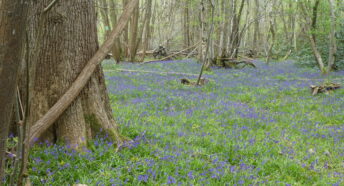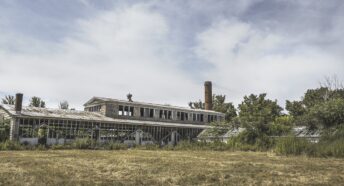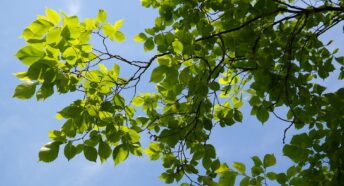Plant Your Postcode FAQs
Want to know how to get trees planted in your neighbourhood? Wondering how Plant Your Postcode works? You have come to the right place.
How can I get trees planted in my neighbourhood?
We will need some basic information to help you get started with planting trees in your neighbourhood:
- What is the street and postcode?
- Does your street have trees already or has it had trees recently?
- Is there a group of residents willing and able to raise some funds towards the trees?
We will add your details to our street survey list and liaise with the Tree Planting team at Brighton & Hove City Council to check what can be planted in your road. The team will probably need to carry out a survey to check what is under the ground and speak to highways teams and their contractors about how much work is needed. Whether or not trees have been there before will affect whether planting is possible, how much it is likely to cost and when it might take place.
Will planting definitely be able to take after the survey?
Even though a survey may say planting can be carried out, unforeseen factors may mean planting cannot be done at the site. In this case the city council will discuss with you whether planting could be done elsewhere instead. The timescales within which work can be carried out will depend on the level of demand, the nature of the proposed site and the council’s resources.
Who pays for it?
Some planting schemes will be covered by limited funds. However, often the only way trees get planted is by local people raising the funds themselves. We can help support you to fundraise towards the cost of the planting. View our Fundraising 101 guide here.
Why does it cost so much to plant trees in the city?
Tree planting costs can vary widely depending on whether trees are planted into grass or hard surfaces, whether the planting is to replace a stump and if any planting work also means pavements and streets need to be repaired.
Other factors including the surrounding infrastructure and services, defences required to protect the tree once planted and level of watering anticipated may also influence the cost. The standard donation fee does not cover the cost of planting and watering the tree. For stump replacement of elm trees, the council does have limited funding. However, for new tree planting and other stump replacement they have to find external funds which will take time to raise. This is your opportunity to help reach the full cost of tree planting or replacement.
How can we convince neighbours who do not want trees?
Some people have concerns about new trees on their street. This might be because of leaf litter, bird droppings, pavement heaving or loss of parking spaces. Try to focus on the environmental, physical and mental health benefits to planting trees. You can also equip yourself with the facts and figures in these frequently asked questions (FAQs) to educate others about what new trees might mean.
Get a majority of residents to rally around the cause – go door knocking and hold street walks to engage your neighbours. You can agree not to plant next to particular properties on some aspects of the plan. However, it can be very difficult to persuade others to change their views. You will need to be prepared to change your planting plans or even accept they are not possible if opposers can’t be won over.
Why more trees?
Urban trees have a lot to contend with: pollution, pavements and road, underground services, physical damage from people and vehicles, lack of access to water or too much water, poor soil and drying, salt-laden coastal winds. In return they reward us by providing shade, regulating the microclimate, supporting wildlife, reducing air pollution and flooding, and capturing carbon. Living with trees has been scientifically proven to improve our own health and happiness.
How can trees be given the best start?
To give these amazing living entities a good start they need big tree pits dug out (at least 1m³), skilled planting, including protection and support, and aftercare including watering for at least the first three years. For some locations, even more work will be necessary to put the pavement back safely or create a larger pit.
How long will it take?
Trees are a long-term project. They can only be planted in the winter months and need to be ordered from the nurseries in the summer. The arboriculture team plants big saplings (4-5 metres high) which need care and watering in the early years. Some can take many, many years to reach their full size.
For example, lime and London plane trees only grow 30-60cm a year. An elm grows quite quickly at about a metre a year, can reach 24 metres high and live for 200 to 300 years. Silver birches also grow fast and can reach 8 metres in 10 years and 25 metres when mature. However, they only live 40 to 50 years. Our urban forest is continually changing, just more slowly than we do.
Why can’t I just go to a nursery, buy a tree and plant it outside my house where there’s a bit of green space or dead tree stump? It would save a lot of money.
It takes a certain type of tree to put up with all the local challenges. This means choosing the right type of tree for the location and sourcing them from reputable nurseries. Some trees which grow big also cause problems with their roots, others become unstable when large, or may be susceptible to certain diseases.
There is also the consideration of planning planting across the city as a whole, plus planting legacy trees with diversity of species. The Tree Planting Team takes great care in only sourcing trees which won’t bring pests and diseases into the city and are healthy specimens which will thrive. Finally, it can be dangerous planting trees near to roads, especially busy ones. Using our scheme means expert contractors can do the work with all the correct safety gear. We know how important it is to be there when trees are planted, so we will work to ensure there is a planting event or photo opportunity once the trees go in.
Why do we have so many stumps on our streets? The council always seems to be felling trees.
Brighton & Hove City trees have had a tough time recently. Many of our street trees are types of elm and the devasting Dutch Elm Disease (carried by a beetle) has attacked and killed many of our oldest and best-loved trees. We have been lucky that many of the trees have resisted the continued attacks, but it is likely we will see many more lost to the disease.
There are other pests and diseases which also mean trees become unsafe and need to be reduced, or removed entirely, to avoid people getting hurt or property being damaged by falling branches and trunks. Many of our trees are also getting old and towards the end of their lifespan they need to be managed.
Will having a tree planted outside my house now cause damage to the foundations of my home in future?
No. The Tree Planting team ensures the species is right for the space and this means choosing trees which do not have root growth which will invade foundations or underground pipework. Tree pits can also be lined and built in a way which restricts root growth and prevents this problem.
Will planting new street trees on pavements cause them to crack and bend as the roots of big street trees do now?
No. Many of our lumpy pavements are caused by elms which are notorious for their invasive root systems. Tree replacement choices are made to ensure this is not going to happen, even if they get big above ground.
What is stopping us having trees planted in our street/neighbourhood?
There are many factors to consider when requests for trees in streets are made. These could include: underground services, opposition from other people in the street, overhead cable issues, blocking sight lines for highway users, blocking views, competition with other important habitats (such as wetland or native woodland) and cost.
How do we make sure our new trees thrive?
Read our Top Ten Tips for Tip Top Trees!





